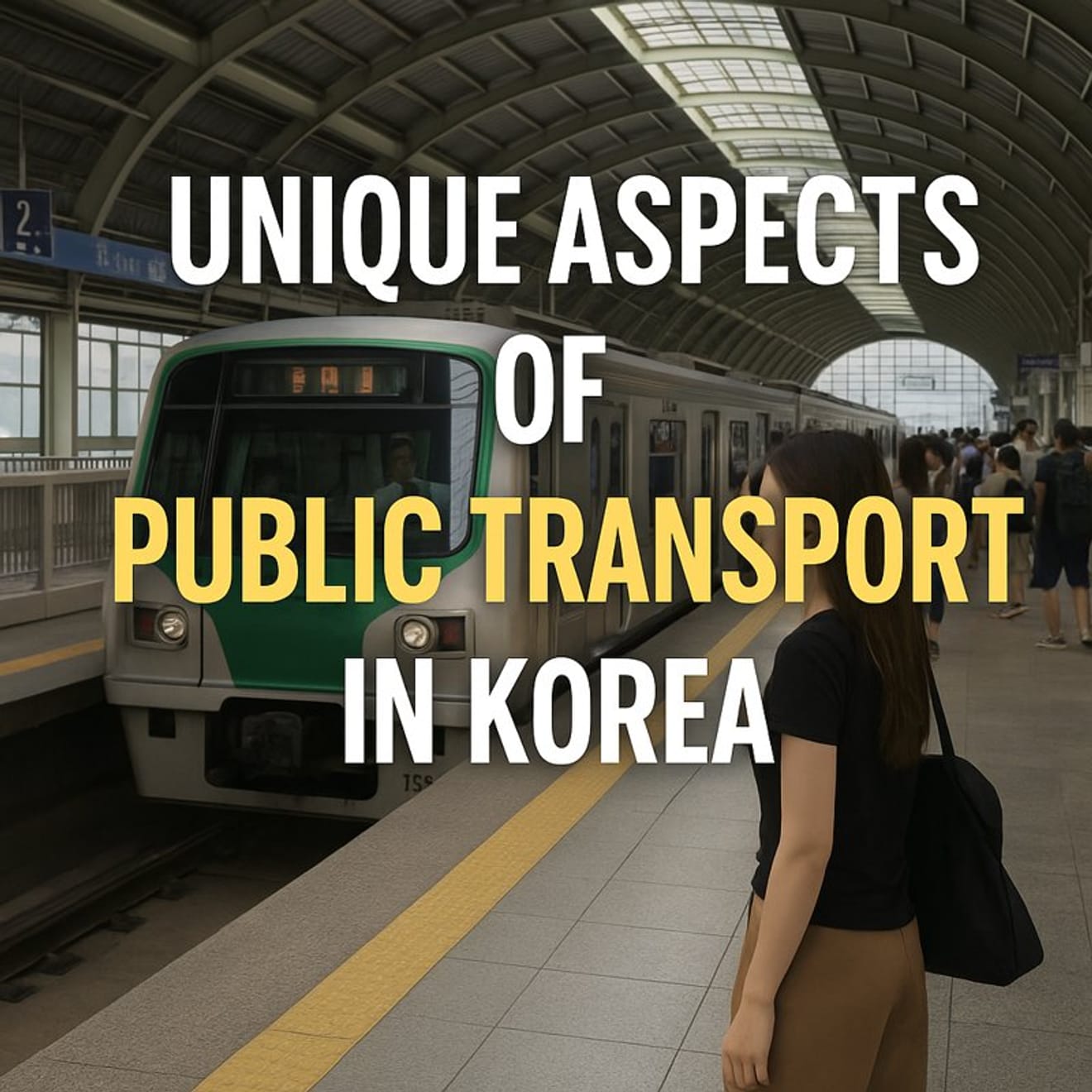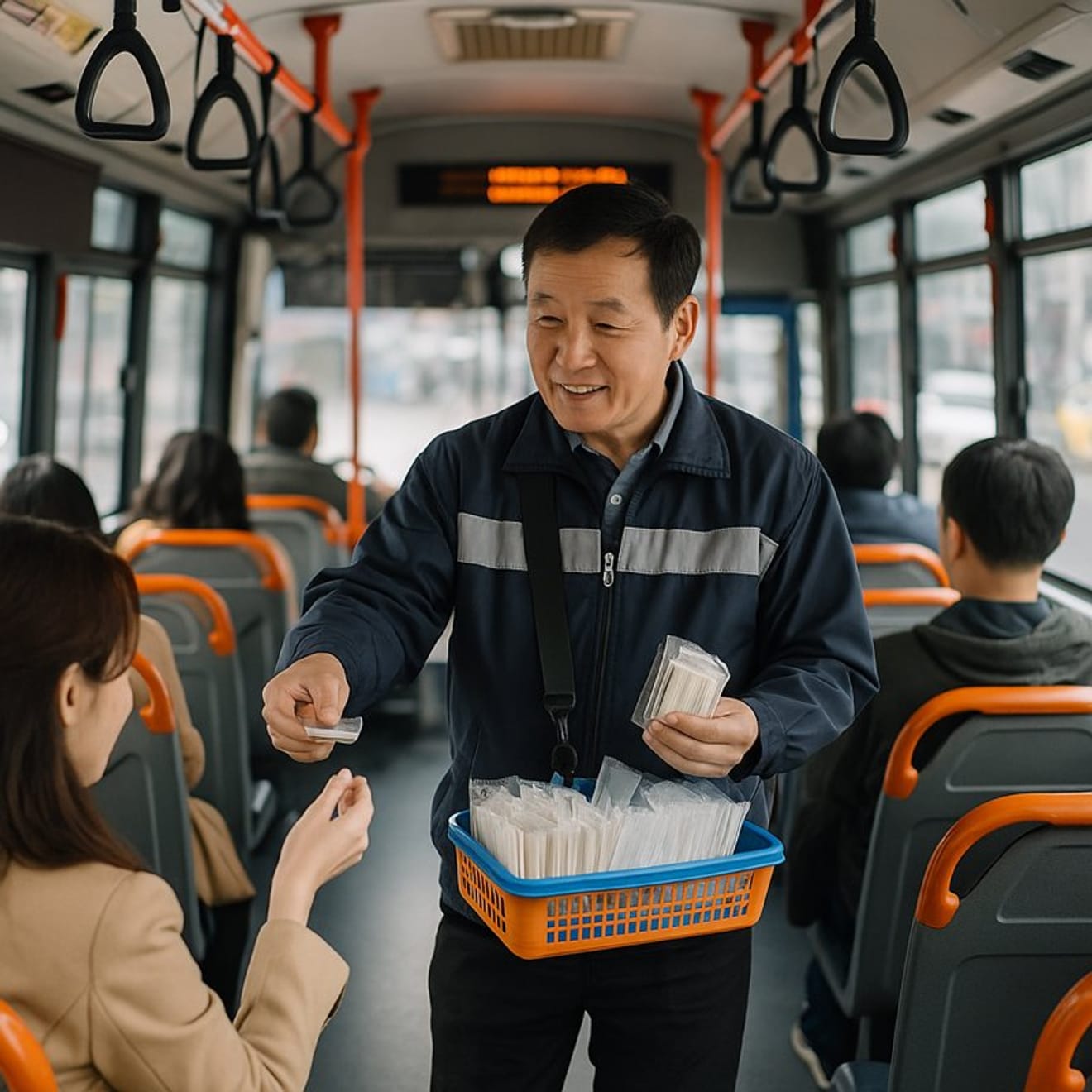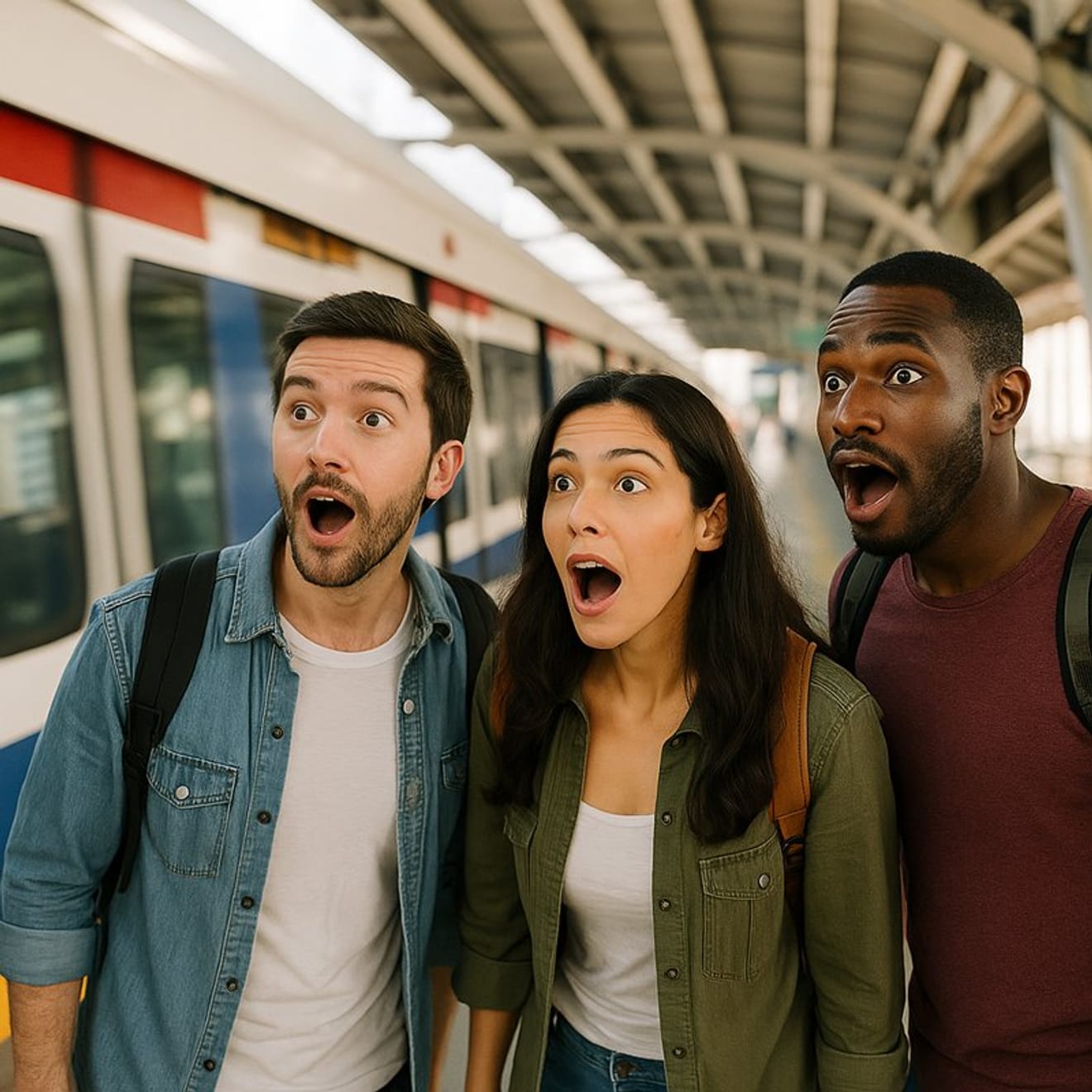- TOP 10 Curious Scenes in Korean Society: From Unmanned Stores to Abandoned School Cafes
- Introducing 10 curious scenes in Korean society, exploring changes in Korea that may seem unique to foreigners, such as unmanned stores, abandoned school cafes, and the culture of eating and drinking alone.
Public transportation in Korea is recognized worldwide as being 'accurate, fast, and inexpensive.' Seoul's subway arrives almost to the minute, taxis can be hailed with an app, and a single transportation card that can be used anywhere in the country connects buses, subways, and taxis. However, there are cultural aspects, unfamiliar and interesting to foreigners, that breathe within Korean public transportation, which cannot be explained by mere convenience.
For example, you can see a medicine peddler with a microphone selling health supplements on the subway, and people vying for seats on the last row of express buses.
Also,
• An unspoken rule not to sit in seats for the elderly and disabled
• An unspoken etiquette to refrain from conversations on the bus
• Owl buses that operate until late at night
These cultures also demonstrate the collectivism and consideration-oriented thinking of Korean society.
Especially for foreign tourists and residents, questions such as “Why is this so elaborate?” and “Why is this scenery so quiet?” naturally arise. This article was created to answer those questions.
From now on, we will explore ‘The peculiar scenes of Korean public transportation’one by one, as seen through the eyes of a foreigner. It will surely be a new perspective and an interesting cultural discovery for you as well.

Peculiar scenes of Korean public transportation that surprise foreigners
1. Subway medicine peddlers – Is the subway not just a means of transportation?
If you use the Seoul Metropolitan Subway in Korea, you'll occasionally encounter very unfamiliar figures. They are 'medicine peddlers.' Mostly middle-aged or older men, they enter the subway cars, take out a small microphone or megaphone, and suddenly start talking to people. “This product, which also appeared on TV, is really good for your joints!” they might say, demonstrating it, or spreading out various items from their bags.
Of course, they don't actually sell pharmaceuticals, and health supplements, functional bandages, and plasters are the main items. They are in a gray area legally, and subway staff or police often don't intervene unless they cause excessive noise or complaints. In some lines, passengers even listen attentively to the medicine peddlers' stories or purchase their products.
Behind this culture lies the 'mobile merchant culture' that sold goods on the streets during Korea's economic growth period. It's as if the scene, which used to be common on buses or in markets, has moved into the space of the subway. This sales method is often familiar to the elderly.
Although the number of medicine peddlers is decreasing, you can still encounter such scenes depending on certain sections or times, and it becomes a very unique and unforgettable cultural experience for foreign travelers.

2. The tacit rule of seats for the elderly and disabled – seats that are not sat in but must be kept
In the Korean subway, there are special seats called 'seats for the elderly and disabled'. These seats are designated for the elderly, pregnant women, and people with disabilities, and are located at both ends of most trains. What's unique is that most young passengers never sit in these seats, even if they are empty.
This is not just because of the signs, but because of social atmosphere and perception. For example, if a young person is sitting in this seat and an elderly person gets on, they may receive disapproving glances from those around them, and there are even cases where they are photographed and become a topic of controversy on social media.
So, many Koreans choose not to sit there in the first place 'in case someone needs it.' In other words, these are seats where you can sit physically, but there is a psychological and moral barrier.
From a foreigner's perspective, the question “Why doesn't anyone sit here?” might arise, but this culture is deeply rooted in the Korean sentiments of respect, consideration, and caution. Especially in Korea, every action in public places can be subject to social evaluation, so there is a tendency to approach such sensitive seats with even more caution.
3. Quiet bus culture – Silence is also an etiquette
Most buses and subways in Korea are quiet. Phone calls are rare, and it's hard to see friends laughing and chatting loudly. Especially during rush hour, buses become a ‘space of silence’.
This can feel quite alien to foreigners. In Europe and the United States, it's natural to talk freely on the phone and exchange jokes with friends even on public transport. However, in Korea, not causing harm to others in public places is considered an important virtue.
In fact, when Koreans receive a call on a bus or subway, they briefly say, “I'm busy now” or “I'll call you later because I'm on the bus,” and hang up. This is a learned behavior throughout society, and it is recognized as basic etiquette among Koreans.
The quiet atmosphere in public places can create tension in some ways, but at the same time, it is also evaluated as a case that shows a high level of order consciousness and consideration culture. From a foreigner's perspective, it is a scene where they can directly experience the novelty and 'cultural consideration'.
4. Owl bus – A city that moves even after midnight
In Korea, especially in Seoul, you can take a bus even after midnight. This is because there are late-night routes, so-called ‘Owl bus’. These buses operate from midnight to 2 or 3 a.m., connecting major areas.
For example, routes between Gangnam and Hongdae, or Jongno and Jamsil, are typical, and they operate at intervals of 30 to 40 minutes, which is a great help for those returning home late.
This system is a very surprising experience for foreigners. In many countries, subways and buses stop running after 11 p.m., so taxis or walking are common instead of public transportation. However, in Korea, you can use buses relatively safely even at late night, and the fares are almost the same as regular public transportation.
Especially for travelers, night shift workers, and students who study late, it provides a sense of living in a 24-hour city, and it can be said to be a representative example that shows the dynamism and safety of the city together.
5. Transportation card that connects the entire country
The most convenient way to use public transportation in Korea is with a 'transportation card'. After purchasing and charging a prepaid card like the 'T-money card', you can use it on subways, buses, taxis, and even at convenience stores.
The real advantage of this card is that it can be used in almost all cities nationwide, including Seoul, Busan, Daegu, and Gwangju. In foreign countries, transportation systems are separated by city, so a transportation card from one city often cannot be used in other areas.
However, in Korea, you can take a transportation card used in the metropolitan area to Jeju Island or Gangwon-do and still use it, and the fare is automatically calculated based on distance. In addition, transfer discounts apply, so you can save money when transferring between buses and subways on the same route.
This system boasts an unparalleled level of integration and efficiency worldwide and comes with tremendous convenience for foreign travelers.

In conclusion – Daily transportation, a window to culture
Foreigners who have used public transportation while traveling or living in Korea often say this:
“Korean transportation seems to be not just fast and convenient, but also a part of life and culture itself.”
In fact, Korean subways and buses are not just a means of transportation. You can appreciate paintings in subway stations, read books in book cafes, complex unspoken competitions are hidden even in a single seat on express buses, and the Owl bus, which runs relentlessly even at midnight, conveys the unceasing pulse of the city.
And within it, the unique sense of order, consideration culture, pursuit of efficiency, and collectivism of Koreans are deeply ingrained. There are ‘seats for the elderly and disabled’ that no one sits in but everyone should respect, a bus culture where silence is courtesy, and even subway medicine peddlers whose commercial activities also breathe in their own way—all these elements make foreigners ask “Why is this culture possible?”.
The answer to that question is not simple. Korean society is changing rapidly, but it also contains deep historical significance and a sense of community. That is why Korean public transportation is not just a ‘means for moving,’ but a small, deep window where you can experience a slice of Korean society.
Comments0